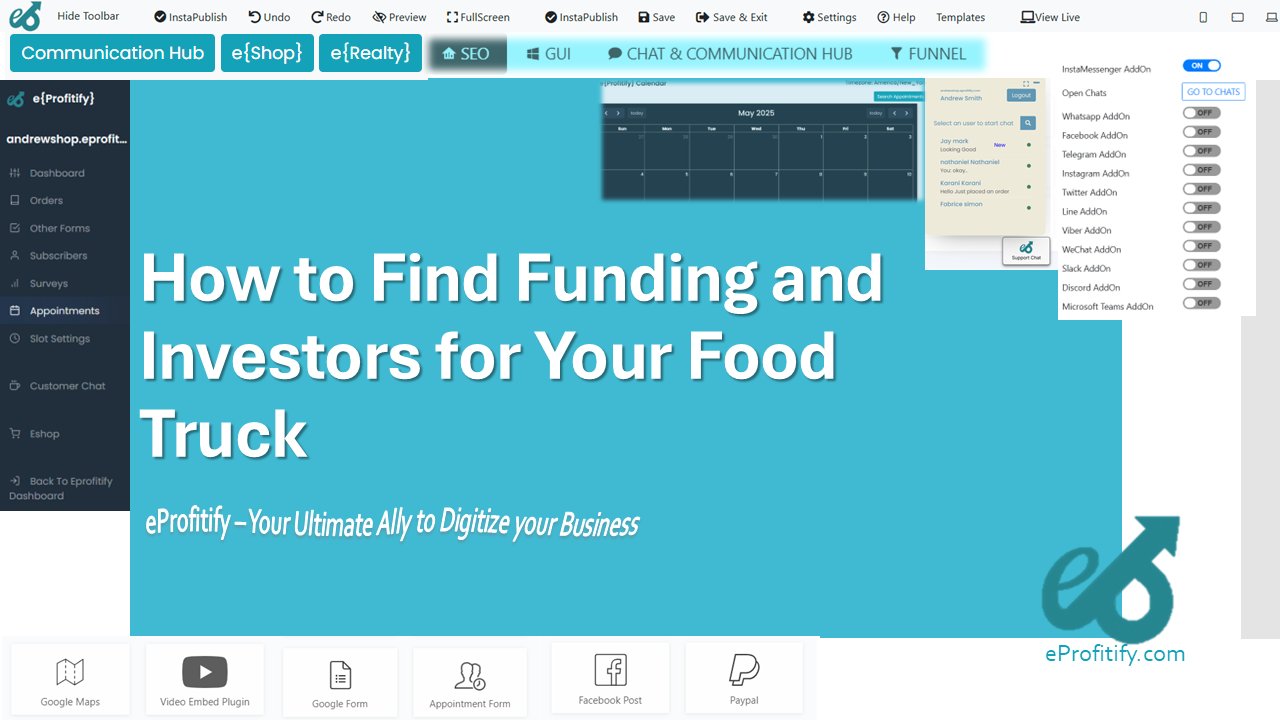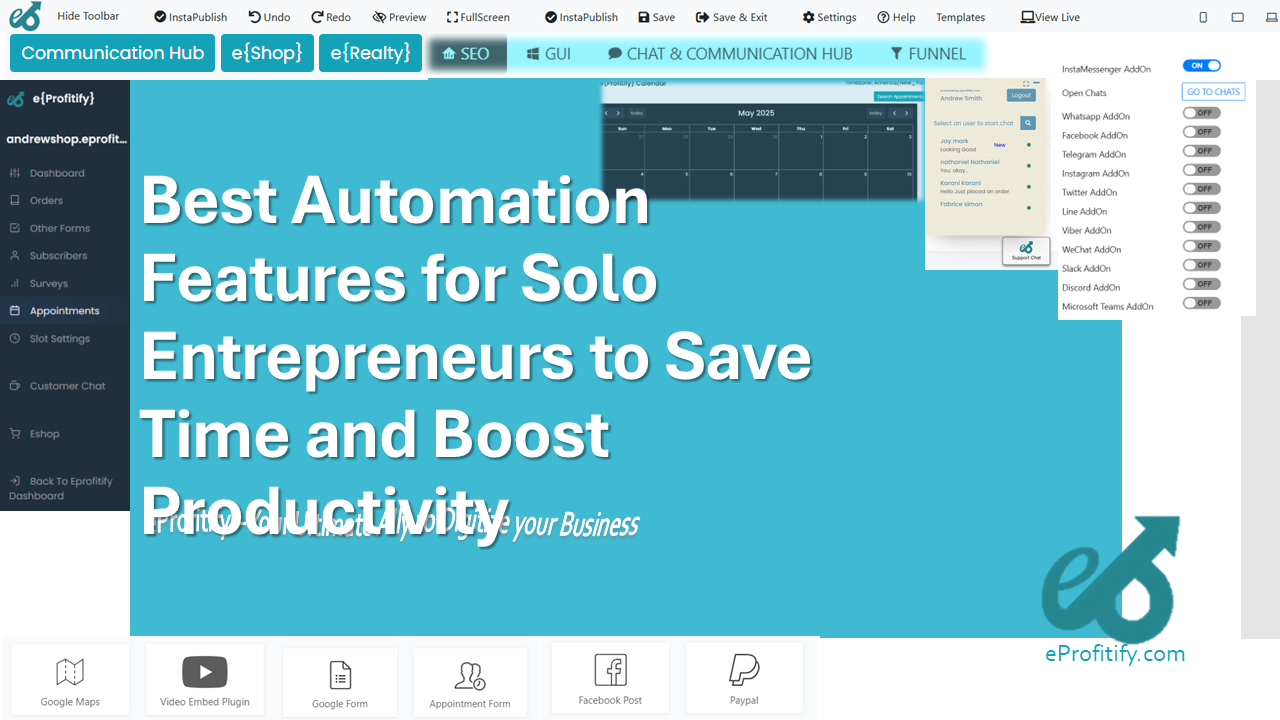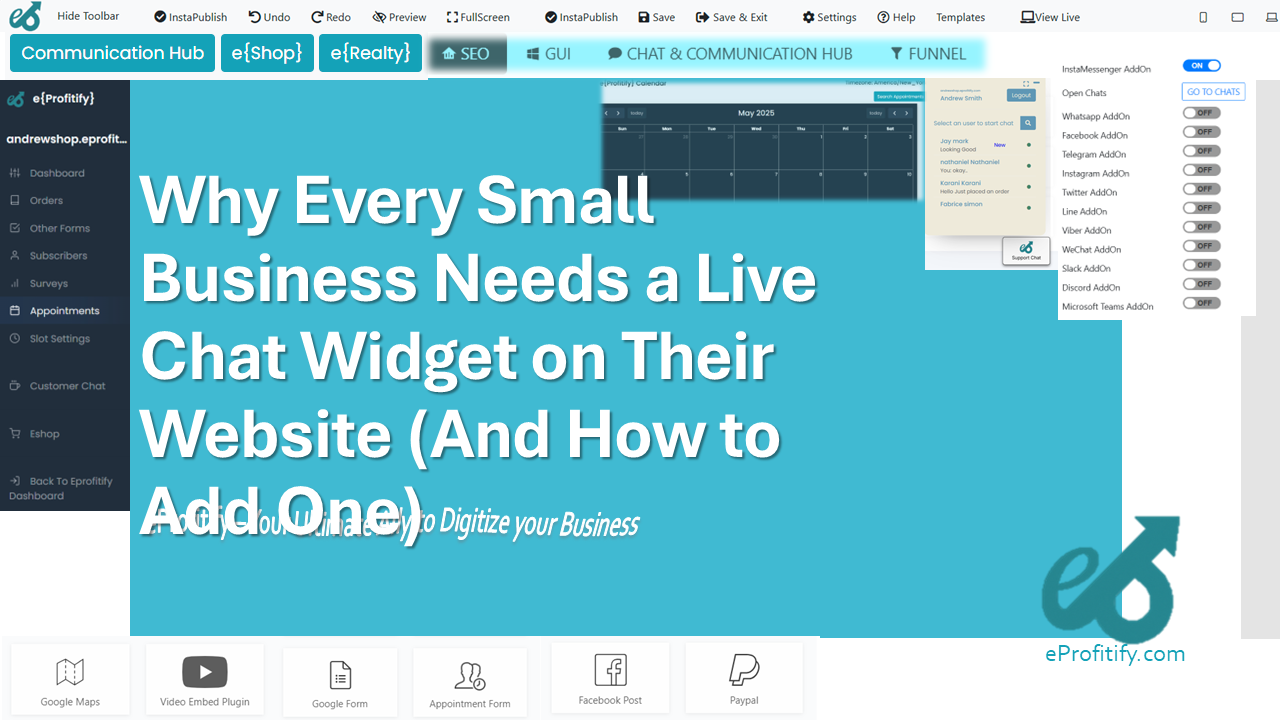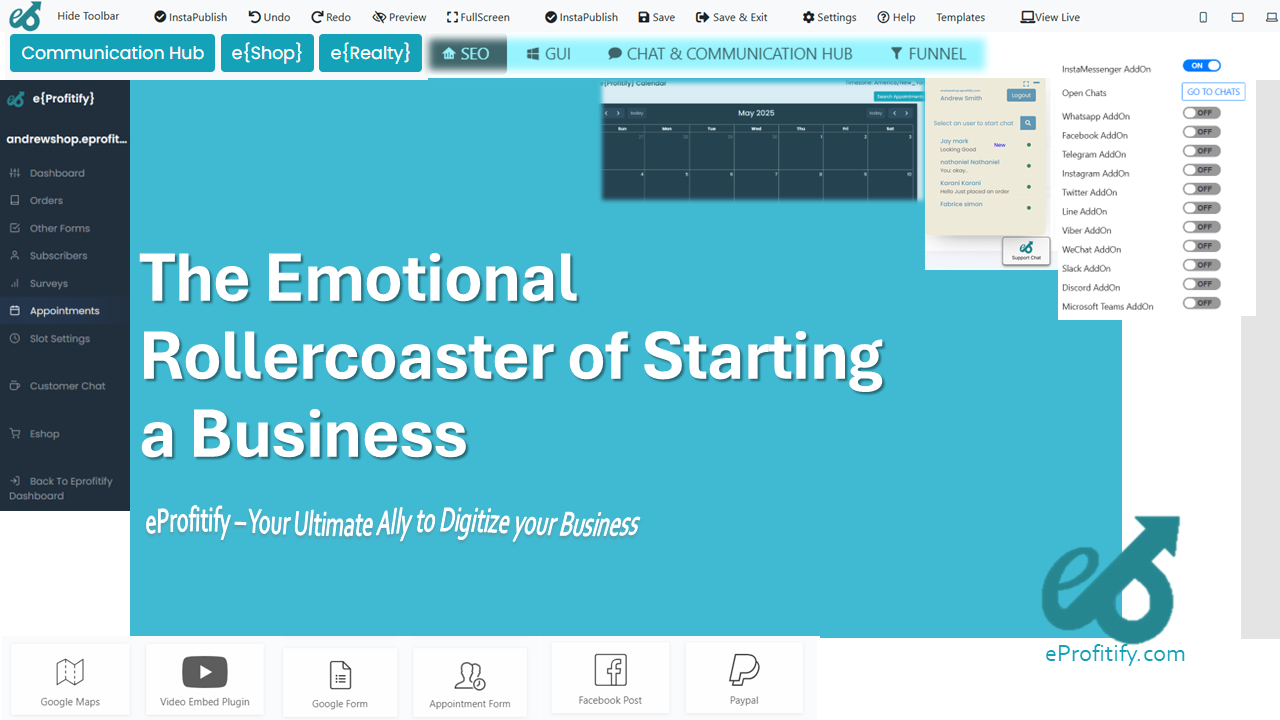How to Find Funding and Investors for Your Food Truck

Schedule a LIVE Zoom call with an eProfitify Expert.
How to Find Funding and Investors for Your Food Truck: A Comprehensive Guide
The food truck industry has exploded in popularity, evolving from a niche market to a $3.02 billion industry in the U.S. as of 2023, with a projected annual growth rate of 6.7% through 2030. This vibrant sector offers entrepreneurs flexibility, lower overhead costs than traditional restaurants, and direct access to customers. However, launching a food truck requires significant upfront investment—typically between $50,000 and $200,000 for permits, kitchen equipment, and branding—making funding a critical hurdle. This guide outlines actionable strategies to secure financing and attract investors, while highlighting how tools like Eprofitify, a leading website publishing and management platform, can streamline operations and enhance investor appeal.
1. Develop a Solid Business Plan
A robust business plan is the foundation of any successful funding strategy. Investors and lenders need clarity on your concept, target market, financial projections, and growth strategy. Your plan should include:
- Market analysis: Highlight local demand, competition, and unique selling points (e.g., vegan cuisine or fusion dishes).
- Revenue streams: Detail income sources like event catering, online orders, or merch sales.
- Financial forecasts: Project sales, expenses, and break-even timelines.
Statistic: 20% of food trucks fail within their first year, often due to poor planning (Source: Oak Business Consultant).
Eprofitify Integration: Use Eprofitify’s website tools to create a professional business plan template and host a branded website showcasing your menu, location schedules, and customer testimonials. Its CRM features help track customer preferences and investor interactions, ensuring organized communication.
2. Bootstrap with Personal Funds
Many entrepreneurs start by self-funding through savings, credit cards, or selling personal assets. While risky, this demonstrates commitment to investors. Reinvest early profits to cover operational costs like fuel, ingredients, and marketing.
Statistic: 77% of small businesses rely on personal savings for initial funding (Federal Reserve).
3. Explore Loans and Government Programs
Traditional Bank Loans: Seek loans from banks or credit unions, though approval rates for small businesses hover around 15-20% (National Small Business Association).
SBA Loans: The U.S. Small Business Administration guarantees loans with favorable terms—average 7(a) loans are $500,000.
Microloans: Organizations like Kiva offer loans up to $15,000 for underrepresented entrepreneurs.
Eprofitify Integration: Manage loan repayments and financial tracking via Eprofitify’s dashboard, integrating accounting tools for real-time budget updates.
4. Attract Investors
Angel Investors: High-net-worth individuals often invest $25,000–$100,000 in early-stage ventures. Pitch your food truck’s scalability, such as franchising or expanding into multiple locations.
Venture Capital: Rare but possible—focus on tech-driven differentiators (e.g., AI-driven route optimization).
Eprofitify Integration: Use CRM tools to maintain investor relationships, schedule follow-ups via the appointment management system, and share performance reports securely.
5. Leverage Crowdfunding
Platforms like Kickstarter and Indiegogo let you pre-sell menu items or offer exclusives (e.g., naming a dish). Successful campaigns average $28,656 for food projects (Kickstarter).
Eprofitify Integration: Embed crowdfunding links directly into your Eprofitify-hosted site and use instant messaging to engage backers with real-time updates.
6. Participate in Contests and Pitch Competitions
Winning competitions like FedEx Small Business Grants or local entrepreneurial contests can provide $5,000–$50,000 in non-dilutive funding.
7. Form Strategic Partnerships
Collaborate with breweries, coffee shops, or offices to secure regular pop-up spots. Split revenue or negotiate sponsorships with brands targeting similar audiences.
8. Utilize Government Grants
Explore grants like USDA’s Value-Added Producer Grants for food businesses. Though competitive, they offer up to $250,000 in funding.
9. Maintain Investor Relations
Transparency is key. Provide quarterly updates on sales milestones, customer growth, and challenges. Tools like Eprofitify’s CRM centralize communication, track promises, and automate reminders for investor meetings.
10. Demonstrate Traction
Investors seek proven concepts. Use data from Eprofitify’s analytics dashboard to showcase rising sales, repeat customers, and social media engagement. Features like ecommerce integration simplify online ordering, expanding your reach beyond physical locations.
Conclusion
Securing funding for a food truck demands creativity, perseverance, and strategic tool utilization. Platforms like Eprofitify empower owners to streamline operations through instant messaging for customer engagement, appointment systems for catering bookings, and CRM tools for investor management. By combining a airtight business plan, diverse funding sources, and tech-driven efficiency, your food truck can stand out in a competitive market and attract the right backers.
In an industry where agility and customer connection are paramount, tools like Eprofitify not only enhance daily operations but also signal to investors that your business is scalable, organized, and primed for success.






